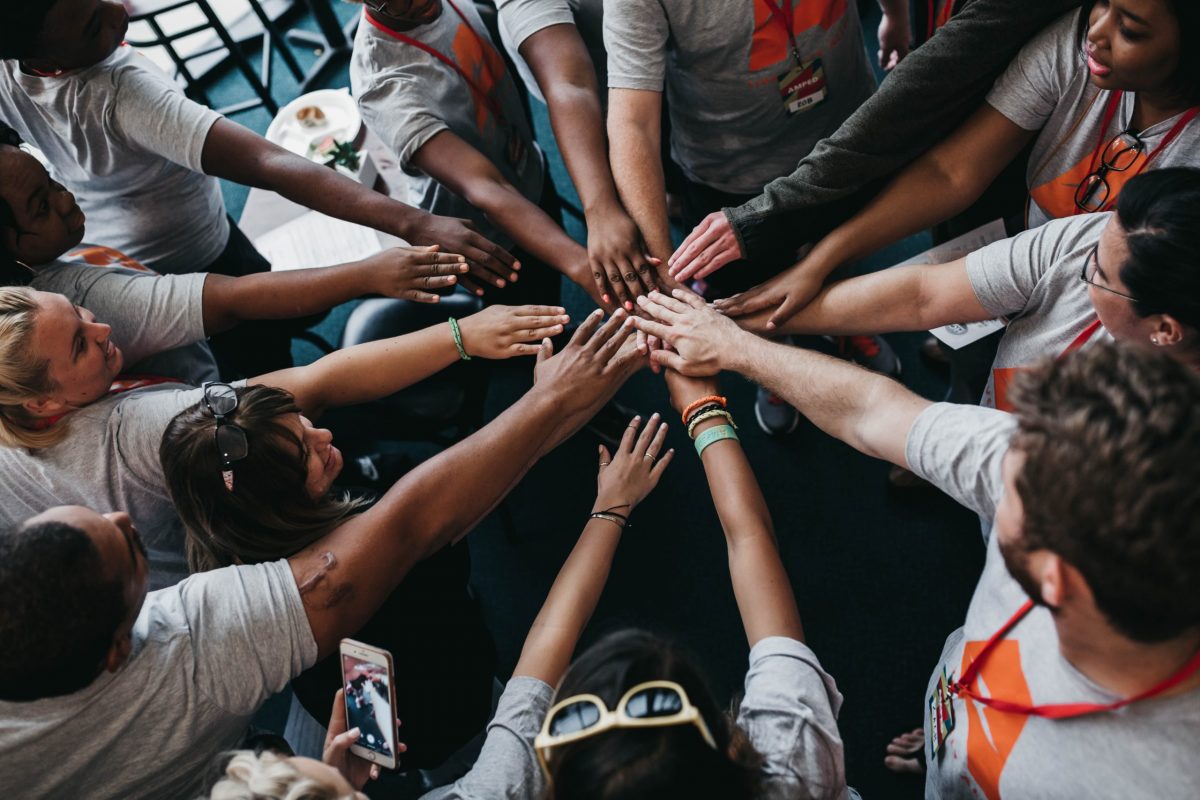
We often talk about inclusion in the context of broader conversations about diversity and equity programs and initiatives. It’s true that high levels of inclusion are necessary for diversity practices to positively impact and develop trust in groups1, but an inclusive team culture is generated by everyday interactions. Inclusion is also applicable to every person in an organization, not just underrepresented groups. You can have a homogenous team with low levels of inclusion. Any one of us can experience the benefits of inclusion and the detriments of exclusion at any time. So, how do we create a more inclusive team culture?
To understand the impact that inclusion (or lack of) can have on a team, think about a recent meeting where you didn’t feel heard or comfortable sharing your opinion because your point of view was different from the rest of the team. How did it feel? Most likely it impacted your level of engagement with the group and your willingness and ability to contribute to the meeting.
“The strength of the team is each individual member. The strength of each member is the team.”
– Phil Jackson
A team is inclusive when its norms are carefully constructed to promote experiences of both belonging and uniqueness for its members. According to the National Bureau of Economic Research, we are spending more time than ever in meetings at work since the stay-at-home orders and lockdowns started in 2020. So, if meetings are one of our most frequent and important forms of interaction with others at work, we should be intentional about how we conduct our meetings to foster a more inclusive team environment.
Below are some ideas on how to intentionally design and facilitate more inclusive team meetings.
Observe patterns
If you intentionally pay attention to your next 2-3 team meetings, you will likely see behavior patterns emerge. Are you spending more time talking than listening? Does everyone have an equal opportunity to participate? Is someone dominating the conversation? Are people being interrupted? Do people talk over each other? Who is silent or only speaks when prompted?
Be clear on the meeting intention
Once you have an informal assessment of how inclusive your team meetings are, try to make the next one better. Start by defining the meeting objective – Is it to inform? To brainstorm? To decide? Be clear on your intention and determine the meeting agenda according to your objective and desired outcomes. This will help you define the attendee list and make sure that no one is unintentionally left out. To make the meeting more productive, share the agenda with the team in advance.
Conduct small experiments.
Based on your observations, try some new approaches in your next meeting to be more inclusive. Here are some ideas:
- Do a quick check-in at the beginning of the meeting. People work better together when they get to know each other as individuals. This may be challenging in virtual and hybrid work settings. To help people be present and share how they are coming into the meeting, do a check-in where each person answers two questions: How has your day been so far? What do you want to get out of this meeting?
- Inclusive informing. Discuss with the team, who else needs to know about this? Did we unintentionally leave someone out? How can we effectively communicate this information to others outside this team?
- Inclusive brainstorming and discussion. If the purpose of the meeting is to brainstorm and discuss ideas, consider breaking the bigger group into smaller groups to increase interaction and allow everyone to contribute. In smaller groups, you can have team members write down their ideas independently before brainstorming and then use a round-robin approach to ensure that each member shares their ideas.
- Inclusive decision-making. If the purpose of the meeting is to decide, define and communicate upfront who will make the ultimate decision. Do you need more information from the team or do you want the team to decide as a group? If the former, a good technique is to allow people to vote silently on ideas, so team members are not unduly influenced by the votes of others.
- No interrupting rule. It’s a simple as it sounds, prohibit interrupting at your meeting. Gently, but firmly, call out when people are interrupting or speaking over others.
- Do a quick check-out at the end of the meeting. Leave time at the end of the meeting to understand how each participant feels and if they felt that the team accomplished what they set out to do in the meeting. This will give you valuable feedback to see how your experiment went and what you can improve for the next meeting.
Culture gets created or reinforced in each and every interaction. So, why not leverage the time you spend in meetings to make a difference in driving a more inclusive team?
____________________________________________
1Downey, S. N., van der Werff, L., Thomas, K. M., & Plaut, V. C. (2015). The role of diversity practices and inclusion in promoting trust and employee engagement. Journal of Applied Social Psychology, 45(1), 35- 44.


 When we start to
When we start to 
 Allow me to emphasize this fourth lesson for a moment. Agile is often presented as the remedy that will heal all corporate ailments. This is overly simplistic, and some may even consider it an insult to their intelligence. However, the natural tendency of this person is to sway to the other end of the pendulum and negate any benefit of the new way of working. This, too, is foolish.
Allow me to emphasize this fourth lesson for a moment. Agile is often presented as the remedy that will heal all corporate ailments. This is overly simplistic, and some may even consider it an insult to their intelligence. However, the natural tendency of this person is to sway to the other end of the pendulum and negate any benefit of the new way of working. This, too, is foolish.

 The second aspect that made this program different was that it was not designed as the typical immersive, residential, intensive x-day workshop. Instead, we scheduled shorter interventions several weeks apart. This design was deployed before the pandemic, so the sessions were held face-to-face. Nevertheless, this concept has survived to this day as a valid structure for most of our hybrid or purely online leadership development journeys.
The second aspect that made this program different was that it was not designed as the typical immersive, residential, intensive x-day workshop. Instead, we scheduled shorter interventions several weeks apart. This design was deployed before the pandemic, so the sessions were held face-to-face. Nevertheless, this concept has survived to this day as a valid structure for most of our hybrid or purely online leadership development journeys.



 Then, eventually, there was a point when I realized that the pain of not doing anything was larger than the pain of change. So, I started my
Then, eventually, there was a point when I realized that the pain of not doing anything was larger than the pain of change. So, I started my 


 One of my qualms about the idea of “well-being” is that it often follows a prescriptive approach. This is how one “should” eat, workout, rest, work, etc… oh, and here is the evidence for it. As well-intentioned as this might be and as well-substantiated as the proposal may be, I have noticed that many of us find it difficult to fully connect with it beyond just accepting what is proposed.
One of my qualms about the idea of “well-being” is that it often follows a prescriptive approach. This is how one “should” eat, workout, rest, work, etc… oh, and here is the evidence for it. As well-intentioned as this might be and as well-substantiated as the proposal may be, I have noticed that many of us find it difficult to fully connect with it beyond just accepting what is proposed.